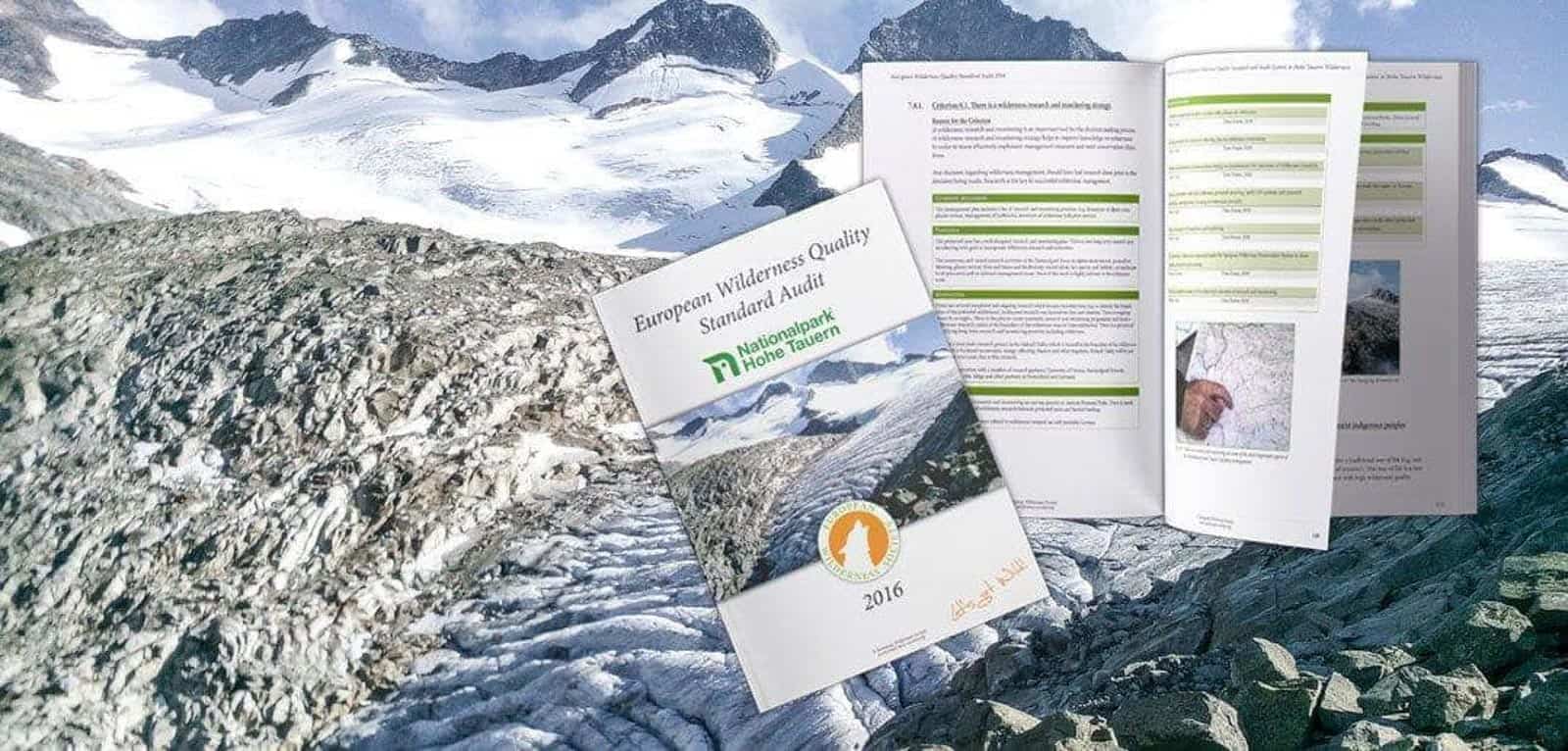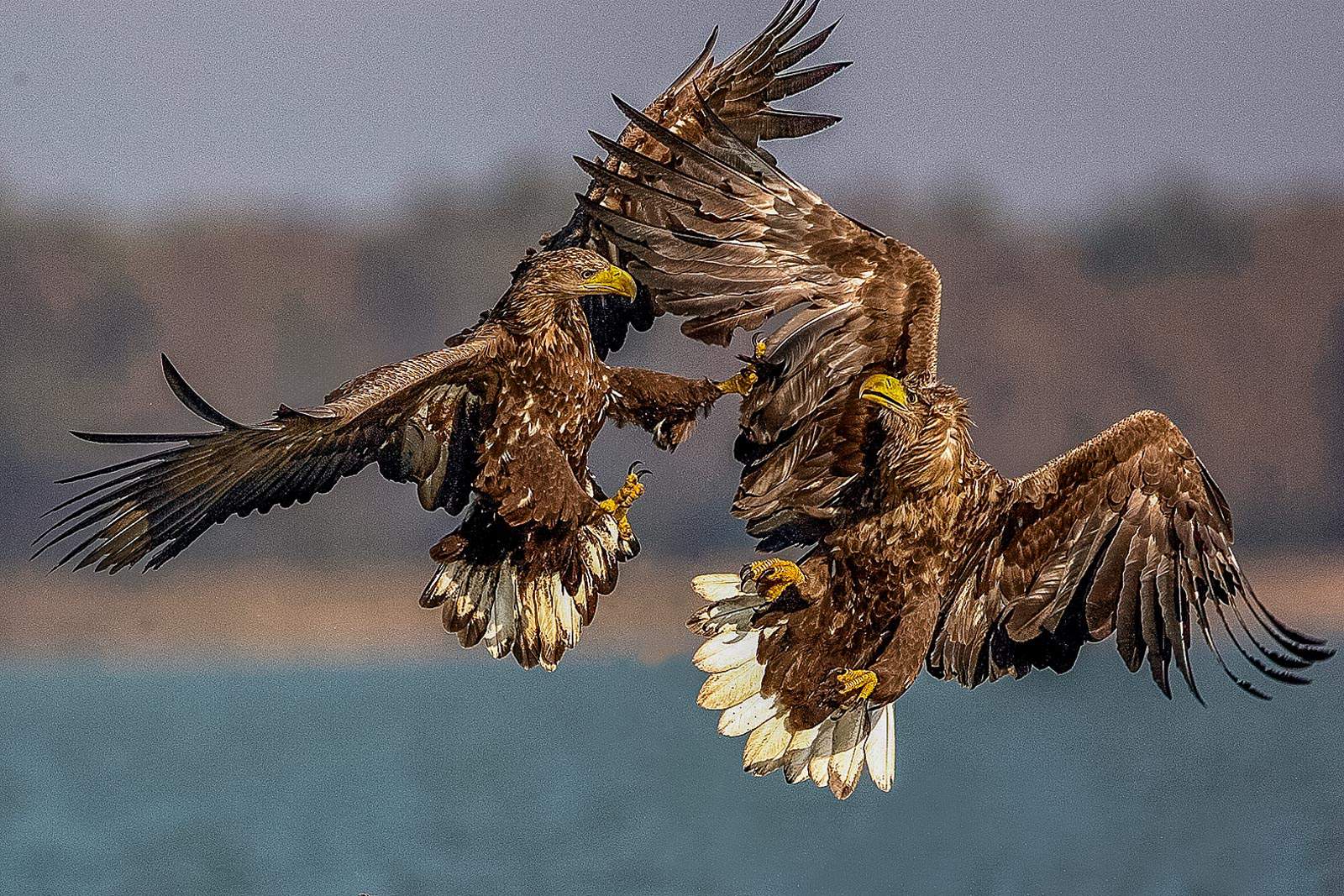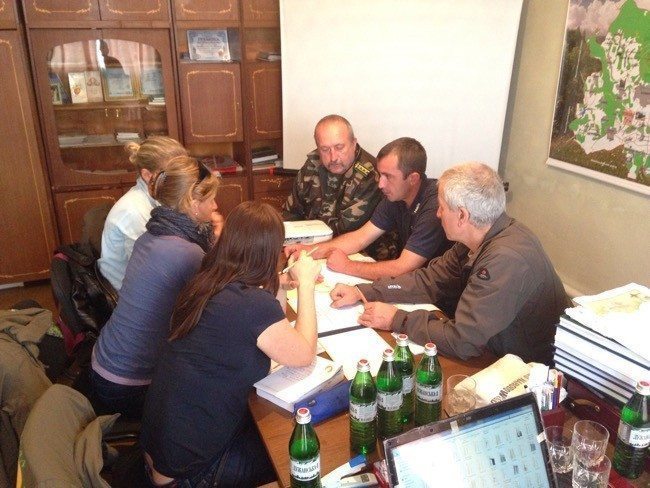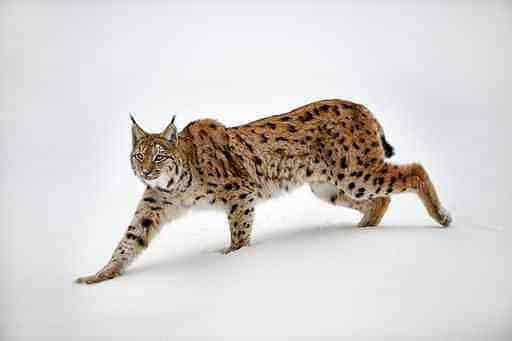What Does an Anti-Racist Wilderness Look Like?
The issue of racism and the ‘Black Lives Matter’ movement have spread around the world within the last months. It became clear that racism is present everywhere around the world in all aspects of life. Which means that even Wilderness Advocates have to address this topic to create a Wilderness areas and a Wilderness experience that is open and just for everyone. Our dear friend John Hausdoerffer has contemplated throroughly how to create an anti-racist Wilderness and we feel privileged to share his thoughts with you. The following text is his essay “What Does an Anti-Racist Wilderness Look Like?”.
Gregory and Travis McMichael, father and son, murdered Aumaud Arbery on February 23, 2020 in Brunswick, Georgia. A leaked cellphone video led to their arrest over a month after the gruesome and hateful incident. I finally found the strength to watch the video. Arbery is out for his daily jog, running down a quiet tree-lined street on a bright day under blue sky. The athletic bounce in each step shows that this ritual gives him a sense of serenity in his community. He is at home in his body and neighborhood. A large white truck is stopped in front of him and he jogs around it. Suddenly men jump out of the truck and in less than thirty seconds they shoot him, calling him the “N-word” as he struggles to live. Aumaud Arbery dies on the scene when paramedics arrive. Arbery is unarmed. Just out for a jog.
Like too many before Arbery and like too many since Arbery, he was killed in his own community only because of the color of his skin. One month later, on March 25 in Minneapolis, Officer Derek Chauvin kneeled on the neck of George Floyd for eight minutes and forty-six seconds until Floyd died. Chauvin and his partners ignored Floyd’s pleas for his life, his calls for his mother. Floyd’s final words, “I can’t breathe,” were not enough to spark even a semblance of humanity in Chauvin. Even more frightening is the distinct possibility that Chauvin, knowing he is being watched, extends Floyds suffering as a performative display of the institutional power of police over community members. Floyd’s death has sparked a welcome reemergence of the Black Lives Matter movement in America and around the world. Floyd’s death has revealed to many what so many non-Whites know every day—neighborhood, economic, social, and political infrastructure is built on and driven by entrenched institutional racism.
Who gets to live in peace in their home?
Underneath this long-overdue racial reckoning lies a basic and vital question: who gets to live in peace in their home? As an environmental philosopher, I once interviewed the environmental justice thinker and activist Devon Pena. When asked about the criteria for determining the health of both ecological and human communities, Pena said, “when we talk about human rights or animal rights, the only right that matters is the right to live in peace in your home. And that matters for hummingbirds and for people as well.” Brunswick, Georgia was Arbery’s home; Minneapolis, Minnesota was Floyd’s home; Louisville, Kentucky was Breonna Taylor’s home, where officers Jonathan Mattingly, Brett Hankison, and Myles Cosgrove murdered her with eight shots after breaking in while she slept in bed at one in the morning; the list is, sadly, too long to continue here. All Americans must face the institutional and individual barriers of deeply embedded racism that keeps all from having peace in their home. All Americans must look at all spaces and ask what anti-racist spaces look like. What does an anti-racist neighborhood look like? What does an anti-racist police force look like?
In this moment, it is incumbent upon wilderness leaders to ask: what does an anti-racist wilderness look like? We know the value of wilderness—a space to ensure biodiversity in the face of the sixth great extinction event in the planet’s history; a space to provide carbon sequestration in an age of climate chaos; a space to enhance scientific experimentation; a space to elevate human regeneration. But to whom are these distant wilderness spaces available for experimentation or regeneration in an era in which a white woman calls the police on a Black birder enjoying New York’s Central Park?If Arbery cannot safely jog in his neighborhood, if Floyd cannot safely talk with his own community’s police, if Taylor cannot survive sleeping in her own bed, then to what extent can wilderness offer an equitable sense of peace to all humans of all backgrounds?
Problematic role of Wilderness in the US
This is a very complicated question, given the historically problematic role wilderness has played as a tool of colonialism in the United States. Many know that the Bannock Tribe was removed in the mid-1800s to make Yellowstone feel more like a “natural” space for a new generation of white tourists seeking inspiration (Chase, 108). Recently, The Sierra Club apologized for their founder John Muir’s white supremacist views that drove his vision for Yosemite. According to The Washington Post, “Muir, who was born in Scotland, came to the U.S. as a young man and traveled and wrote extensively, romanticizing nature in breathless passages. He emphasized the need to preserve the land but also disdained American Indians as dirty savages and Black people as lazy ‘Sambos,’ a particularly offensive slur.”
From a more contemporary perspective, many indigenous activists and authors have challenged the way in which the “wilderness” idea erases the deep, long-term trial-and-error history of native peoples shaping their homeland with Traditional Ecological Knowledge and multi-generational intelligence. From my privileged cultural background, I often wonder what it would feel like to have my homeland, shaped first by ancestors and then taken as part of a history of displacement, called a “wilderness”? How is calling a homeland instead a wilderness a continuation in our minds of the displacement that occurred on the land? As author Enrique Salmon states, “there is no word for wild in my native language of Raramuri” because his ancestors shaped the biodiversity of the land as a “keystone species in some ecosystems” (Salmon, 24). To call the land wild would both separate humans from the land with which they co-created biodiversity and remove from memory the complex understanding of land and culture that these societies continue to hold.
Moreover, several Black commentators talk about how “wilderness” spaces in their cultural memory carry deep trauma from the white supremacist violence that happened in the woods. As Black Land Project founder Mistinguette Smith put it, “the relationship of blackness to land we think of as wild is always informed (but not wholly defined) by wilderness as an unsafe place. It remains inhabited by the specter of flight from patrollers enforcing ownership of black bodies and black labor. Every tree offers memories of fruits both sweet and strange” (Smith, 142). Or, as Eden Place Chicago founder Michael Howard shares, “for a lot of African Americans…the wild, the forest, the woods—we don’t want to go there, we’ve had negative experiences there. Our forefathers died in that swamp; our forefathers were tracked down and hanged from the trees in those woods” (Howard, 173).
“The wilderness that has regenerated me can be the same space that violently dismantled homelands.”
I am left deeply unsettled, challenged, humbled. How can the wilderness become a space for anti-racist engagement rather than a stolen space of escape into my whiteness?

Listening to Pena, Salmon, Smith, and Howard—and thinking with a heavy heart about how the wilderness that has regenerated me can be the same space that violently dismantled homelands and created fear not unlike Arbery’s or Floyd’s or Taylor’s surroundings—I am left deeply unsettled, challenged, humbled. How can the wilderness become a space for anti-racist engagement rather than a stolen space of escape into my whiteness? After all, when Henry David Thoreau escaped into solitary simplicity at Walden Pond two centuries ago, indeed he went there to connect with natural systems but Thoreau also went there for moral clarity on how to live deliberately in an age of enslavement. In fact, Thoreau spent the night in Concord Jail to protest a tax that supported a slave-expanding war while staying at Walden. Walden’s wilderness setting committed Thoreau more, not less, to social justice. Have we forgotten this necessary social justice duty of wilderness connection? The day that the culturally traumatic American wilderness becomes a place of shared agency and peace for all cultural walks of life is the day I will know that we have reached a new level of justice across society and across all American landscapes.
So, what does anti-racist wilderness look like? It begins with unsettling the word “wilderness” to understand how the biodiversity of these spaces often (though not always) emerged from the indigenous management of homelands. For example, the 14,000-foot San Juan Mountains that I can see from my campus where I currently type are still under the 1873 Brunot Agreement, which gives the Ute people hunting rights and some voice in their management. How can we expand Ute Traditional Ecological Knowledge, Ute tribal councils, Ute elder wisdom, Ute land managers into how the San Juans are managed? This is an anti-racist question for considering the future of San Juan wilderness areas.
Wilderness must be welcoming for many cultures
Also, Michael Howard has worked very hard to “rewild” parts of Chicago for the Black community to enjoy having red tail hawks and coyotes, restored forest and restored prairie, community gardens and environmental education programs right in their neighborhood. For Michael, this heals both the land and future generations from historical trauma. Howard even takes youth groups to the wild Boundary Waters to sleep on the ground and under the stars, but only after he works with grandparents, parents, and children in his community to heal with the land at home—giving South Side Chicagoans both a launch pad and landing pad for larger scale wilderness beyond.
What can I do?
In other words, anti-racist wilderness looks like wilderness shaped by and welcoming for many cultures interacting with the incredibly diverse more-than-human world in an equitably energizing way. As the Sierra Club reckons with John Muir’s legacy, it is also time for donors, foundations, and grants to think about how to more equitably distribute funds from organizations like the $100 million Sierra Club and $350 million Natural Resources Defense Council to tribes like the Ute and organizations like Howard’s Eden Place or Smith’s Black Land Project. Environmental organizations need to consider reparations, just like defunded police forces.
Ironically, the white hope for moral perfection in the face of white supremacy might be part of the problem of white privilege. Such hopes for perfection individualize racism embedded in and perpetuated by the structures of society that need dismantling if ever we are to fully push individuals to grow, together. So, where to begin with structural anti-racism from my problematic, white, privileged social position? Learn, question, amplify, unsettle, repeat.
I will always stumble in my attempts to learn from those without my level of privilege, but listening to Pena, Salmon, Smith, and Howard has been a humble beginning.
I will always stumble in my attempts to question my own privilege, but I must understand better how the wild spaces that elevate my spirit have also been places of trauma for fellow humans.
I will always stumble to amplify those communities of color who disrupt racism with whatever platforms I might have, but I must also face my own organizational leadership as I ask others to shift funding and focus to organizations of color dedicated to land justice.
I will always stumble to unsettle rather than benefit from the comfort zones of white domination, including the beloved spaces of my favorite backpacking trips, but I have faith that stretching my students to partner with all communities in planning for biodiversity and personal enlightenment in wilderness will advance anti-racism in wilderness and beyond.
John Hausdoerffer
Perfection is impossible in these efforts. Solidarity lies in the stumble.










People in the comments really missing the point of the article trying to say that “wilderness has no color when it’s fairly clear that deeming someone’s homeland “wilderness” whitewashes/erases the impact/history of indigenous people.
“Anti-racist wilderness”? Really? This is indeed craziness. Or maybe the better word is insanity.
Species and habitats become threatened regardless of the color of the skin of people. If this craziness will go further, we will have to find another names for black holes and black matter in the universe.
Great essay, Dr Hausdoerffer! Needed and challenging! I particularly like your call for reparative co-management of the homelands of the indigenous people by those who call them “wilderness.”
Hmmmh, that may be so but we did a check on how many women and/or people of color or migration background are at the moment in a management position in European national parks and the result are dismal. We may not discriminate to the same degree people of color as in the USA but discrimination also exists in Europe. We are after all the continent where women are still not receiving the same pay as men in the same position.
So lets reflect and try to become more open to these issues and evolve just like wilderness is continuously evolving
Agree with Mr Ballestro,
wilderness has no color. No people of color or any descent are banned from wilderness areas in Europe.
The BLM movement has nothing to do with wilderness or conservation.
Please, be astute and keep wilderness preservation separated from social justice issues. Don’t let that social and cultural fads influence the great work you have been doing to date.